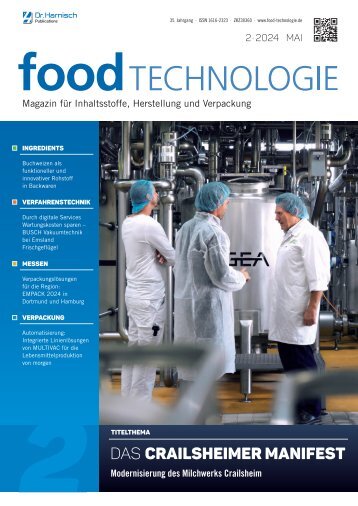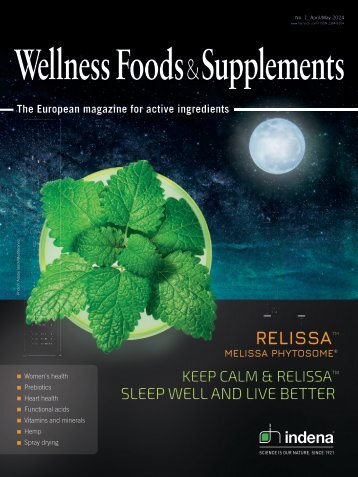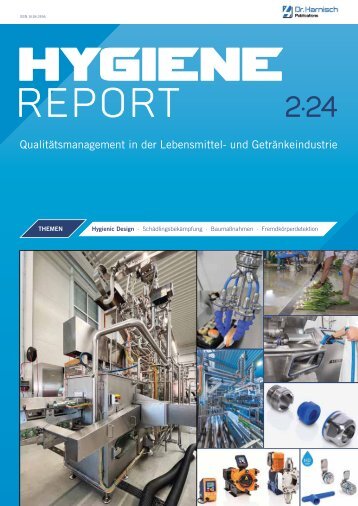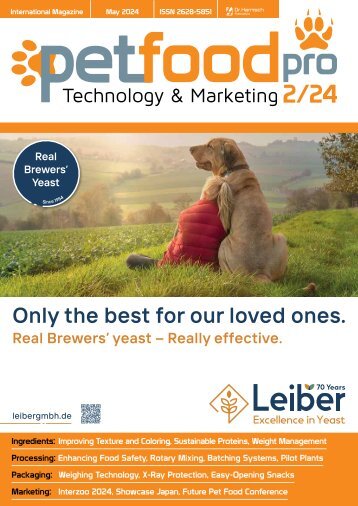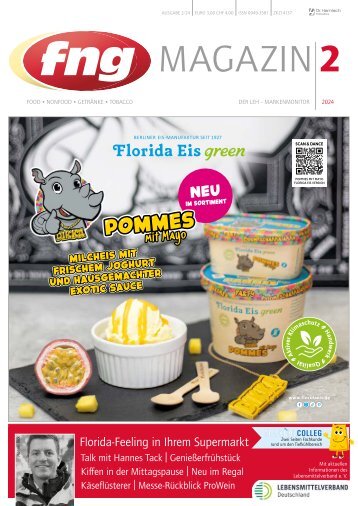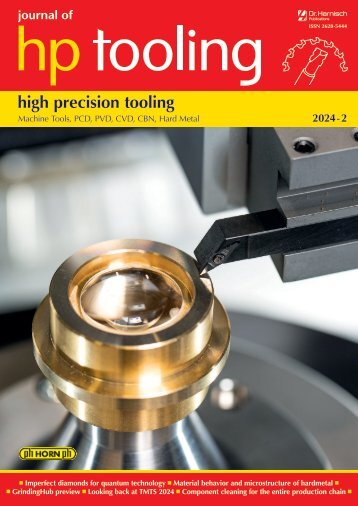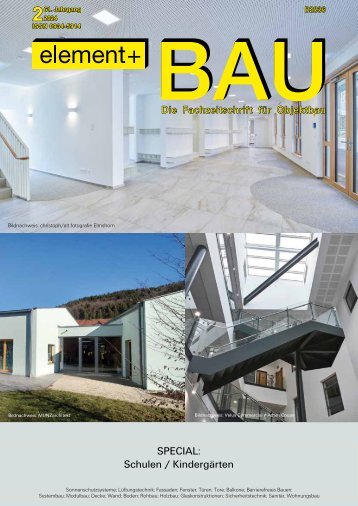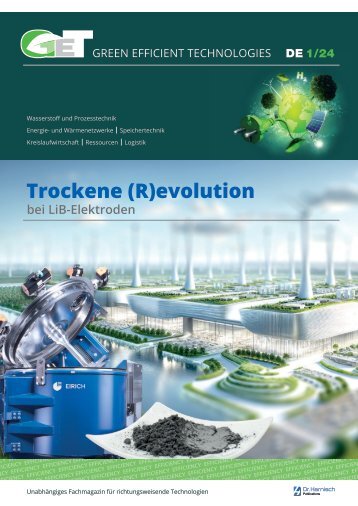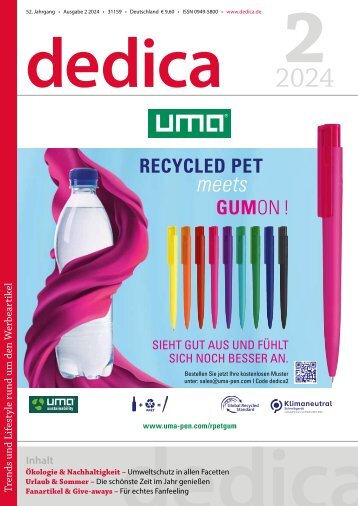GET – GREEN EFFICIENT TECHNOLOGIES EN 1/23
- Text
- Efficiency
- Hydrogen
- Pumps
- Technologies
- Efficient
- Solutions
- Materials
- Operating
- Sealing
- Applications
- Harnisch.com
Circular economy
Circular economy Production Sustainable solutions in fish farming leads to high value health ingredients Dr. Sonja John Photo: Hofseth BioCare Fish farming, also known as aquaculture, plays a significant role in meeting the growing demand for seafood and reducing pressure on wild fish populations. Whilst these are both very important outturns, clearly there is also the need for aquaculture to ensure that farming practices are fully sustainable and avoid any adverse consequences for nature. In this regard, the highly regulated Norwegian aquaculture industry leads the way with strict limits on fish density, sea lice control and a zero tolerance for antibiotic use. Hofseth International AS (HI), and their associated company Hofseth BioCare (HBC), is a purpose-driven and fully integrated seafood company, offering a wide range of quality products from Norwegian Atlantic salmon. To ensure adequate nutrition for the ever-growing world population, it is essential to utilize as much as possible of the food we produce and thereby minimise waste. By prioritizing sustainability and adopting best practices, fish farming can contribute to meeting global seafood demand while minimizing its ecological footprint. In general, aquaculture is a sustainable and low-impact way of producing food. Compared to beef, salmon requires eight times less feed to generate one kilo of meat, while at the same time producing ten times less carbon and using eleven times less water. The process of fish production begins with the careful selection and management of broodstock, mature fish used for breeding. This step aims to maintain genetic diversity and optimize desirable traits, ensuring healthy and resilient offspring. After spawning the fertilized eggs are collected for larval rearing. This stage involves providing suitable conditions such as temperature, water quality, and nutrition to support the growth and development of larvae. After the larval stage, fish are transferred to nursery tanks. Here, they continue to grow in a controlled environment, receiving appropriate feed and monitoring to promote healthy growth. In the grow-out phase the fish are then transferred to open net pens, which in the case of HI, are located in the pristine waters of the Norwegian fjords. During this phase, feed, water quality, and stocking density are carefully managed to optimize growth and minimize stress. When the fish reach the desired size, typically 4-5 kg, they are harvested. Proper handling techniques are employed to minimize stress and maintain fish welfare. Unsurprisingly, fish farming generates organic waste in the form of feces, and other by-products. If not properly managed, this waste can contribute to water pollution, oxygen depletion, and nutrient imbalances in surrounding ecosystems. In the case of Hofseth International, the limited number of fish pens carefully positioned in the deep waters (400-600 m 42 GREEN EFFICIENT TECHNOLOGIES 2023
Circular economy Production deep) of the Norwegian fjords with closely monitored feeding means that HI’s aquaculture has a minimal impact on the environment. Even the side streams (off-cuts) of fish fileting, the head, backbone, skin and remaining meat are upcycled by HBC into premium health ingredients for both humans and pets. This is a major contrast to former days when s these offcuts from salmon were regarded as waste, or at best animal feed. To enable this upcycling, HBC has developed a patented, proprietary process using natural (non-GMO) protease enzymes. It starts with the fresh, food grade salmon off-cuts arriving at HBC’s plant in refrigerated trucks within two hours of harvesting. The off-cuts consist mainly of the head, backbone and skin (as well as some protein/salmon meat). This raw material is inspected and analysed, to ensure the highest quality, before going into the production process. The first step is to mince the raw material before it enters the hydrolysis tanks. These contain water and natural enzymes are added to “digest” the protein to liberate the fish oil and bones from the raw material (and produce bioactive peptides). This output can then be used as ingredients in the production of nutritional supplements and food products. MAGNESIA is an international distributor for health ingredients, focussed on minerals. The company places great importance on sustainably produced products with a low impact on the environment and the respect of human rights. Therefore, the collaboration with HBC and the associated distribution of their products in Germany, Austria and Switzerland is a great win. This process is a fascinating example on how sustainability can be extended to supply chains. All of Hofseth’s operations are in relatively close proximity to each other within the fjords. Efficient and speedy transportation from fish farms to the slaughterhouses and the transport to HBC’s plants thereafter ensures the products’ high quality, safety and low emission. Indeed, the only emission from HBC’s plant is steam which is recycled to help heat the hydrolysis tanks. Therefore, by adopting innovative technologies and efficient processes waste can be minimized and resource utilization optimized. Embracing the principles of the circular eco nomy, waste reduction, recycling, and reusing materials are the key points. Through the commitment to resource management, environmental conservation, social responsibility, and zero waste, it can be demonstrated that sustainability can be integrated into core business operations of manufacturers and distributors. The Author: Dr. Sonja John Head of Product and Application Management MAGNESIA GmbH Photo: Hofseth BioCare GREEN EFFICIENT TECHNOLOGIES 2023 43
- Seite 1 und 2: GREEN EFFICIENT TECHNOLOGIES EN 1/2
- Seite 3 und 4: Editorial Harvest the sun Humanity
- Seite 5 und 6: HAMPRO® HIGH-PRESSURE PROCESS TECH
- Seite 7 und 8: Leading article sion. In fact, it i
- Seite 9 und 10: Cover story Efficiency Class IE2 IE
- Seite 11 und 12: Cover story Myth 3: Journal bearing
- Seite 13 und 14: Cover story Sealless pumps, both ce
- Seite 15 und 16: Energy carrier hydrogen Transport L
- Seite 17 und 18: Energy carrier hydrogen Material se
- Seite 19 und 20: Energy carrier hydrogen Material se
- Seite 21 und 22: Energy efficiency Heat recovery Fig
- Seite 23 und 24: Energy efficiency Heat recovery Fig
- Seite 25 und 26: From the research Heat pumps Fig. 2
- Seite 27 und 28: From the research Heat pumps Fig. 6
- Seite 29 und 30: Efficient manufacturing Special mec
- Seite 31 und 32: Decarbonisation Supply traffic Fig.
- Seite 33 und 34: Decarbonisation Supply traffic shou
- Seite 35 und 36: Decarbonisation Operating power max
- Seite 37 und 38: Decarbonisation Operating power pro
- Seite 39 und 40: Decarbonisation Production local su
- Seite 41: Decarbonisation Production fast swi
- Seite 45 und 46: PROCESS TECHNOLOGY&COMPONENTS © Ae
- Seite 47 und 48: Companies - Innovations - Products
- Seite 49 und 50: Companies - Innovations - Products
- Seite 51 und 52: Brand name register Lutz Pumpen Gmb
- Seite 54: Dr. Harnisch Verlags GmbH Eschenstr
Unangemessen
Laden...
Magazin per E-Mail verschicken
Laden...
Einbetten
Laden...








































